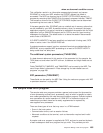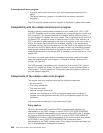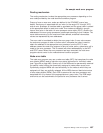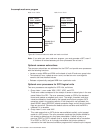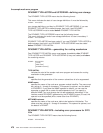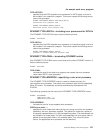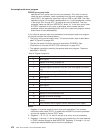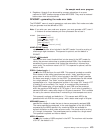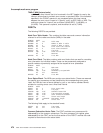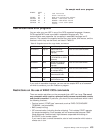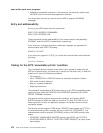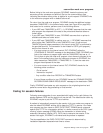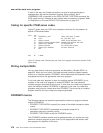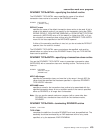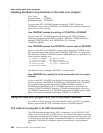
4. Registers 4 through 9 can be saved by common subroutines in an area
reserved in EXEC interface storage at label NEPCSRS. They must be restored
before return from the subroutines.
DFHSNET—generating the node error table
The DFHSNET macro is used to generate a node error table. Each node error table
that you generate must be defined to CICS.
Note: If you write your own node error program, you must generate a NET, even if
it contains no entries because your error processors do not use it.
NAME=DFHNET|name
specifies the identifier to be included in the NET header. It must be a string of
one through eight characters. This operand is optional, and the default is
DFHNET.
COUNT=100|threshold
specifies the error count threshold that is to be stored in the NET header for
use by the common subroutines to update standard ESBs. If the threshold is
exceeded, the error processor that invoked the subroutine is informed by a
return code. The maximum value is 32 767. This operand is optional, and the
default is 100.
ESBS=1|(index,length,...)
specifies the ESB structure for each NEB. This operand is coded as a sublist.
Each element of the sublist comprises two values: “index” specifies an error
group index for which an ESB is to be included in the NEB; “length” specifies
the status area length, in bytes, for that ESB. The parentheses can be omitted
for a single element. The “index” must be specified as a 2-character
representation of a 1-byte hexadecimal number in the range X'01' through X'FF'
(a leading 0 can be omitted). The “length” is constrained only because an
8-byte NEB header plus a 4-byte header for each ESB must be contained
within the maximum NEB length of 32 767 bytes. If a null value is specified, a
standard ESB with a status area length of 10 bytes is assumed. This is suitable
for use by the common subroutines in maintaining a time-stamped error count.
This operand is optional and defaults to 1. This causes each NEB to be
generated with one ESB for error group 1 with a status area length of 6 bytes.
NEBNAME=(name,...)
specifies the names of nodes that are to have a permanently assigned NEB.
The names specified are assigned, in the order specified, to the set of NEBs
requested by the NEBS operand. Any remaining NEBs are available for
dynamic allocation to other nodes as errors occur. The name must be a string
of 1 through 4 characters. The parentheses can be omitted for a single name.
This operand is optional and has no default.
NEBS=10|number
specifies the number of NEBs required in the NET. The maximum valid number
is 32 767; the default is 10.
DFHSNET [NAME=DFHNET|name]
[,COUNT=100|threshold]
[,ESBS=1|(index,length,...)]
[,NEBNAME=(name,...)]
[,NEBS=10|number]
[,TIME=(7,MIN)|(interval,units)]
the sample node error program
Chapter 9. Writing a node error program 473



